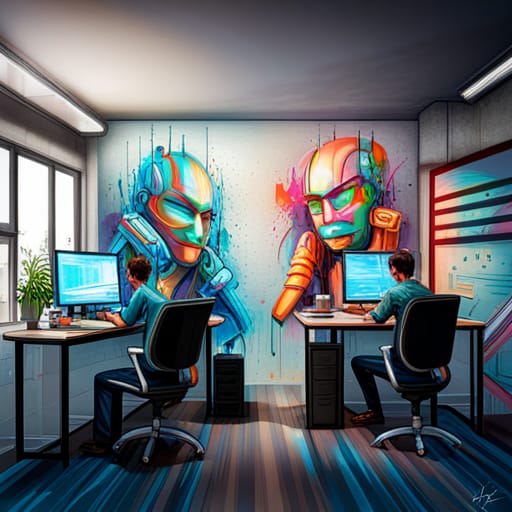
Self-service customer support automation is thriving in today’s world of instant gratification. According to Harvard Business Review, 81% of customers try to handle their issues independently before reaching out to a live representative.
This trend benefits customer support leaders who face the challenge of scaling their teams and improving customer satisfaction (CSAT) within limited budgets. Every time a customer resolves their own problem, it means one less ticket for your agents to handle.
Ideally, a great self-service experience would allow customers to quickly solve their problems and find answers without the inconvenience of contacting support. In cases where assistance from an agent is necessary, customers should be asked to provide qualifying information to expedite their phone support experience.
However, the reality is that most customer support automation tools, such as chatbots, fall short in delivering a satisfactory self-service experience. They often cause frustration and fail to effectively resolve customers’ issues.
Customer support automation has struggled to meet expectations for several reasons. According to Gartner, only 9% of customers can completely resolve their problems using self-service. This low success rate is attributed to several factors.
Chatbots may appear to be an obvious solution for many companies. They are marketed as highly intelligent, capable of understanding customer questions and providing precise solutions. With machine learning and AI capabilities, they are even designed to learn from mistakes and improve over time. Since chatbots can directly interact with customers, they are seen as replacements for human agents.
However, chatbots are not as clever as they are advertised. Their responses are often repetitive and scripted, making them sound robotic. They struggle to handle complex issues satisfactorily and cannot handle the various ways customers may describe the same problems. There are countless stories of chatbots responding in embarrassing or unexpected ways to inquiries.
Moreover, chatbots often require customers to rephrase their questions multiple times, causing frustration and acting as a barrier for those seeking support. Even after multiple attempts, customers may still fail to use the right keywords to obtain the desired answer, assuming it is even available within the system.
Many chatbots heavily rely on companies maintaining extensive knowledge base articles. While there is nothing inherently wrong with that, if a chatbot only serves customers with articles they could easily find themselves, it creates a subpar experience. Investing significant time and money into a chatbot that functions primarily as a glorified search engine is not ideal.
Chatbots fail to understand process flows in the sense that they are not able to guide a customer thought a troubleshooting journey. Giving a customer a 10 step guide is not helpful when they are reaching out to support because that guide did not work for them in the first place.
Although it is possible to address some of these issues with an intelligent chatbot solution, such solutions tend to be highly expensive.
Another reason why support automation falls short is that it primarily aims to deflect tickets. While ticket deflection can be a valid goal, especially for high-growth businesses seeking to efficiently scale their support teams, the problem arises when ticket deflection becomes the sole focus of self-service support.
Overemphasizing deflection can negatively impact the overall customer experience and contribute to customers feeling that companies have lost touch with the human element of customer service. Chatbots, in particular, can make customers feel undervalued by making it harder for them to connect with human support.
The primary goal should be to help customers quickly and easily obtain the answers they need. This may involve human interaction at times, and in such cases, the focus should be on making it as effortless as possible for customers to seek assistance. Automation can be highly effective in delivering a great customer experience in many scenarios, but efforts should be directed toward areas where self-service can excel.
Relying solely on ticket deflection numbers to assess the success of automation overlooks a hidden cost: the proportion of frustrated customers who ultimately disengage from the support process. Sufficient frustration can lead to customer churn.
Instead of simply deflecting tickets, it is essential to examine the underlying causes for the high ticket volume and address them accordingly.
Automation often fails when it is not integrated into the customer journey. Adding a widget, whether it is a chatbot or a knowledge base search, is easy to do. However, it is crucial to consider where customers are coming from, what they are trying to accomplish, and where they are likely to encounter difficulties.
Automation should identify which parts of the support process can be automated and which require human assistance. It should determine how automation and human support interact and ensure a smooth handoff between the two.
To avoid a frustrating experience where customers spend time searching for answers, provide information about their issue, and then have to repeat themselves when contacting support, careful consideration of the customer journey is necessary.
There are situations where automation may not be the best solution, particularly when it worsens the customer experience. Additionally, it is important to recognize that many customers prefer not to interact with a bot.
Depending on the demographics of your customer base and the extent to which the chatbot design resembles live chat support, some customers may not even realize they are interacting with a bot. While this can be positive, discovering later that they were conversing with a bot rather than a human can lead to added frustration.
If automation only exacerbates customer frustration when they are already annoyed by a problem and in need of assistance, it will ultimately be unsuccessful.
Can customer support automation be used in complex cases? There is a common assumption that customer support automation is only effective for simple cases. It is believed that if a case requires extensive back-and-forth communication and a deep understanding of the problem, automation has no place.
While there is some truth to this, automation can still play a role in narrowing down and collecting information related to complex issues. It can facilitate quicker resolutions, help route cases to the appropriate agents or teams, and provide a more detailed definition of the problem. Even with complex issues, automation can significantly expedite the resolution process.
To address the aforementioned challenges, it is crucial to pay close attention to the entire customer journey. Seamless handoff to human support and providing agents with all the necessary information are key to ensuring a positive overall experience for customers.
The best approach is to utilize interactive and guided self-service experiences that automate specific aspects of customer service. These solutions are generally marketed as Decision Trees.
Instead of opting for a chatbot approach that attempts to mimic human interaction, focus on providing easily understandable content that guides customers to the outcome. Even when the outcome can not be reached, it is possible to design a smooth handoff experience for the support team, ensuring customers feel heard and eliminating the need for them to repeat themselves. By doing so, you can help customers solve their problems quickly and efficiently, minimizing feelings of being overwhelmed or lost.
Process Shepherd goes beyond conventional decision tree solutions. It can automatically collect data from your CRM platform to offer a complete self-service experience. With its intuitive visual design interface, organizations can define their business processes, incorporating every edge-case scenario. Customers are guided through their support matters with bite-sized information blocks delivered as needed within each step which is provided by the built-in knowledge management solution. Should more information be required they are able to drill down to the knowledge article which the information block was taken from. This is how you bring self service to the next level.








